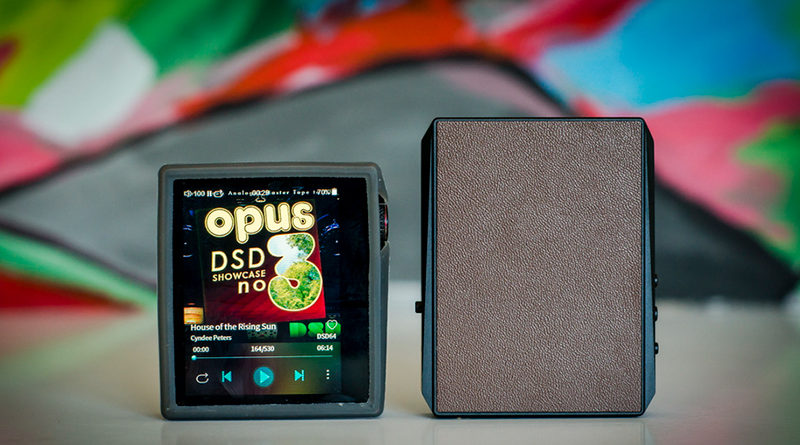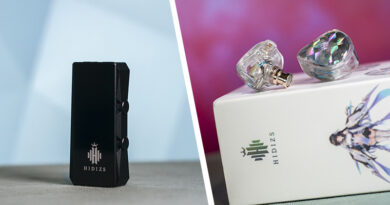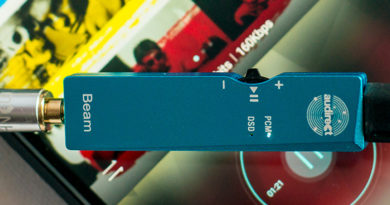Hidizs DH80 (S) – a pair of powerful portable balanced DAC/AMPs
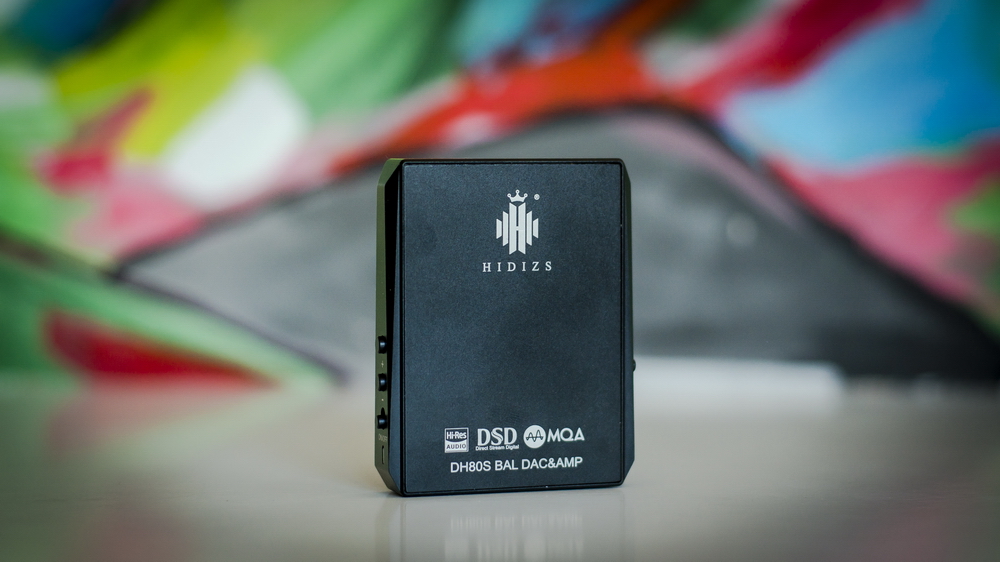
Great news from Hidizs: right after the release of new hybrid MS2 IEMs, Hidizs has announced two more products: DH80 and DH80S. The chosen names are inherited from and join portable DAC/amp “DH” family lineup which will now consists of 3 devices. The first one – DH1000 – was released quite long ago and still stays one of the most balanced product in this niche with very smooth and appealing sound. Despite the similar final purpose, DH80 and DH80S intended to be used differently and have the unique features and scenarios which we would like to describe in this article.
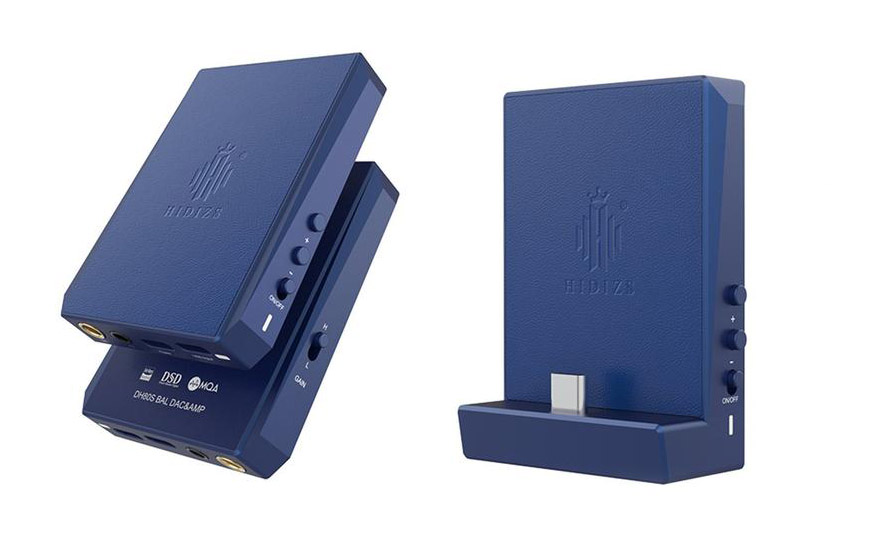
First of all, just to clarify: DH80 and DH80S are similar DAC/amp devices and the only difference is the form factor. DH80S is a standalone universal battery-powered portable DAC/amp suitable for various usage scenarios with lots of different audio sources. Best to be used in “sandwich” type setups or in any other physical combinations. Whereas DH80 is designed to accompany Hidizs AP80 DAP family lineup – it is designed to fit AP80 as a cradle and to expand its features even further. Of course, such shape might also fit other DAPs and even some of the smartphones with USB type-C port but no one can guarantee that such physical combination would not cover other important control elements or ports and what is the most important – that it would not put excessive physical stress on USB. Therefore, the choice is obvious – DH80S is universal, while DH80 is solely for AP80 DAP series.
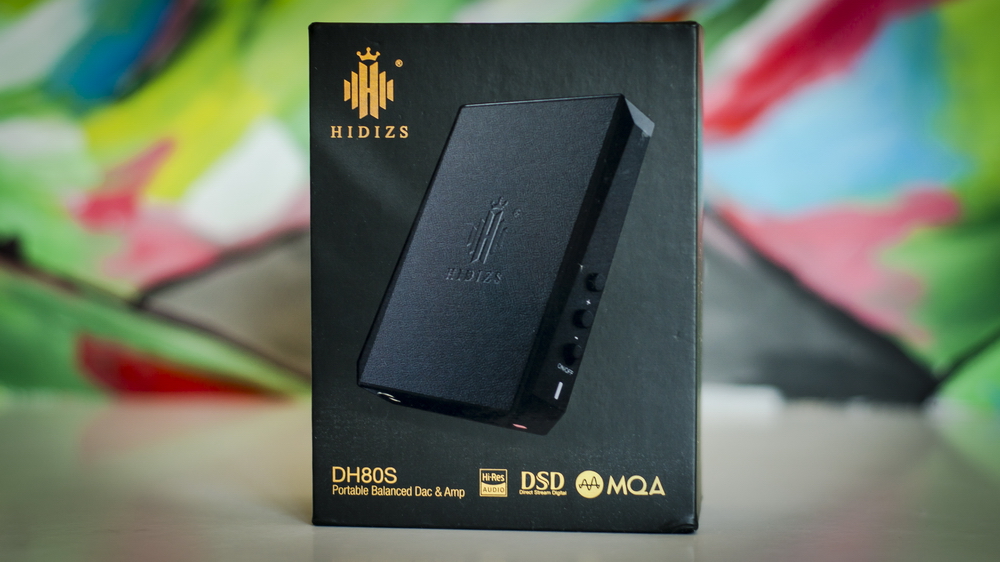
DH80/DH80S tech specs:
- DAC: ESS ES9281C PRO
- OpAmp: RT6863C X2
- Max Sampling Frequency: 32Bit/384Khz
- DSD:Up to 128
- MQA: 8X unfold
- Independent Volume Control
- Gain: High/Medium/Low
- Sampling Rate Indicator (Red:44.1k-48k, Blue:88.2k-384k, Pink:MQA)
- Inputs: USB Type-C
- Outputs: 3.5mm SE, 4.4mm balanced
- Battery:1300mAh 3.7V Li-Polymer Battery
- Charging Time: ~2.5 hours
- Battery Life: balanced: ~6 hours, single ended: ~8 hours.
- OS: Windows 10, Mac OS, iOS, Android (for iOS users, the Lightning OTG cable has to be purchased separately)
- Dimensions: 70×50×12mm
- Net Weight:76g
Specs for audio outputs:
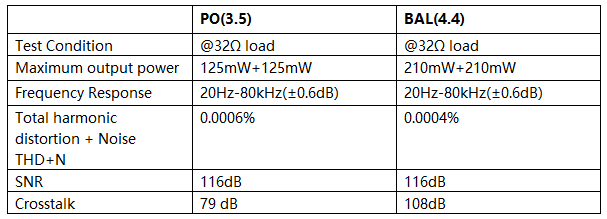
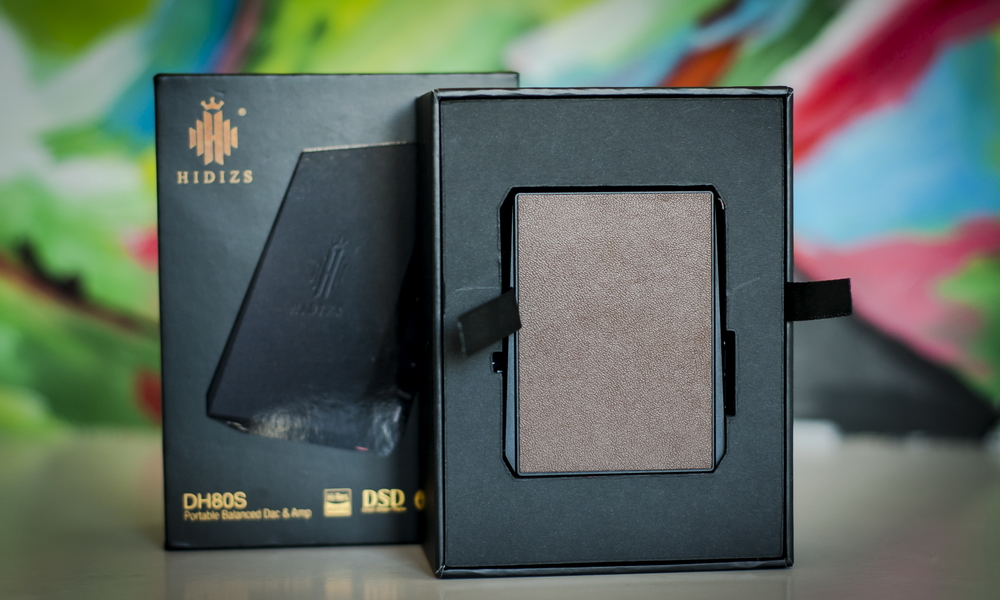
Packaging and design:
Hidizs DH80S comes in small but stiff rectangular box with glossy product picture at front and technical specs printed on the back side. This box consists of two compartments inside, one has soft insert that holds DH80S at place and below that you’d find the rest of the accessories and leaflets. Full set is as following:
- DH80S
- type-C to USB-A converter
- type-C cable
- type-C to type-C OTG cable
- coin type separator for sandwich setup
- warranty card
- User manual
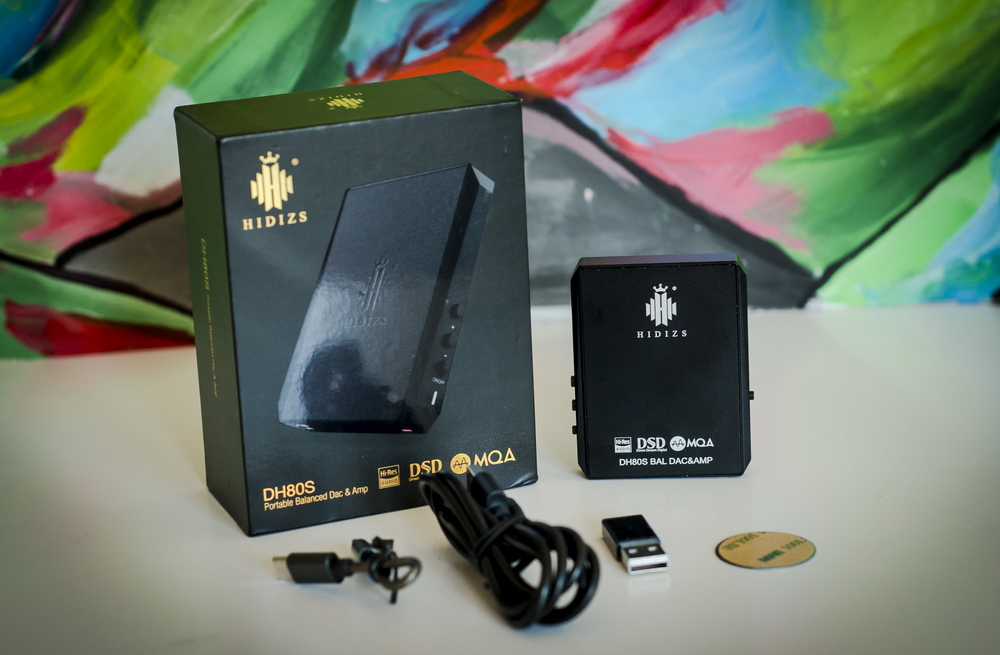
If DH80S had a screen – it would’ve been hard to distinguish it from AP80 DAP. Very similar profile, materials and dimensions. It is built upon unibody aluminum chassis with one main design element in form of leather cover over the facing side.
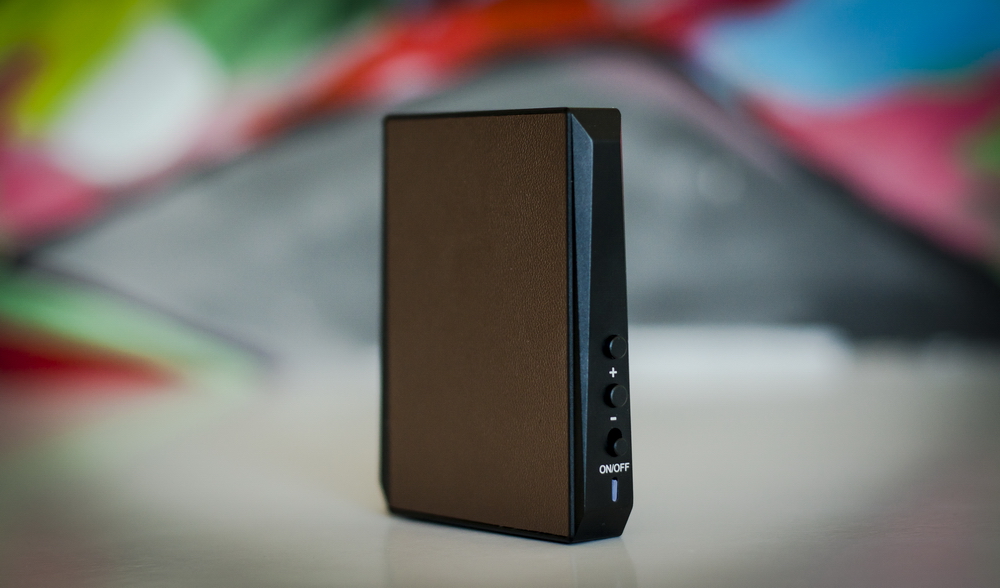
Leather feels nice, has natural surface texture, protects the other device from scratches in sandwich setup and adds the grip to DH80S slippery shell. The opposite flat side contains all prints such as logos and names.
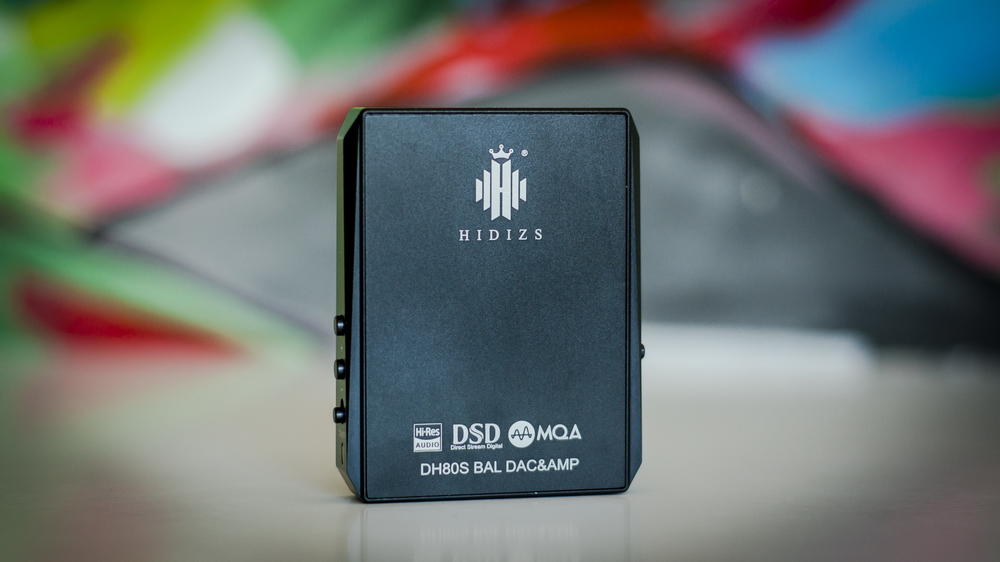
Top edge is left free on any controls. Left edge got 3-position Gain adjustment, right edge has two volume buttons, main power switch and power LED indicator.
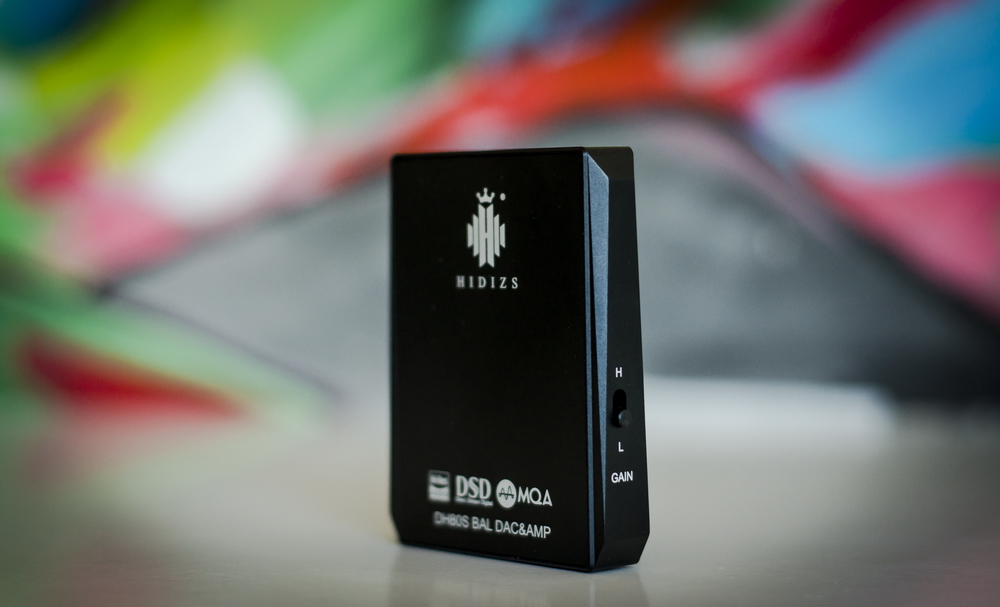
All inputs and outputs are located at the bottom edge: 3.5mm SE, 4.4mm balanced, sampling rate LED and type-C USB charging + type-C USB data ports.
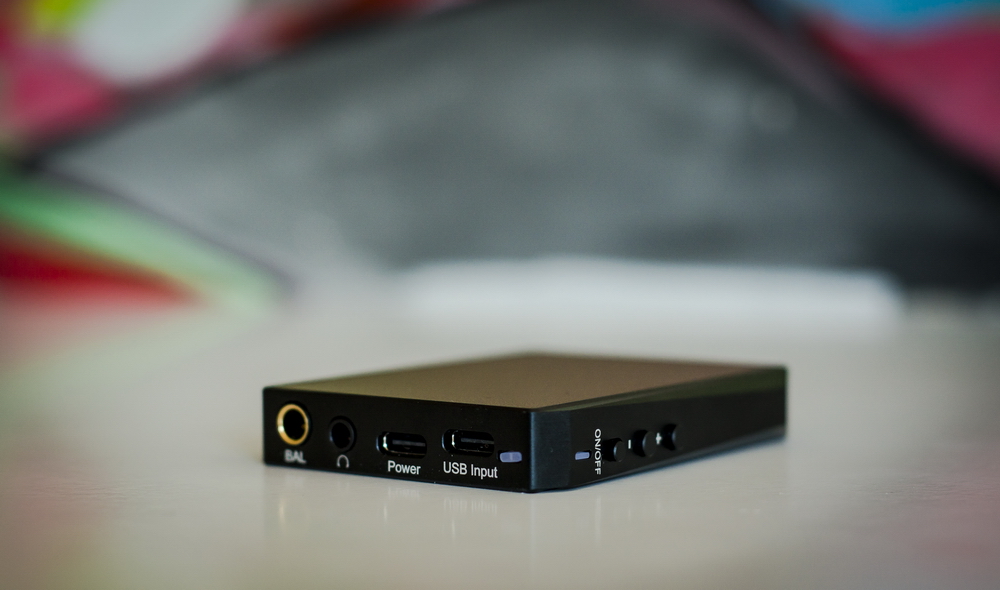
DH80S is neither thick, not heavy, weights only 76g which makes it very good for sandwich setups with different portable audio sources. It would still create Frankenstein awkward look in such stack but would fit in into a pocket, at least.
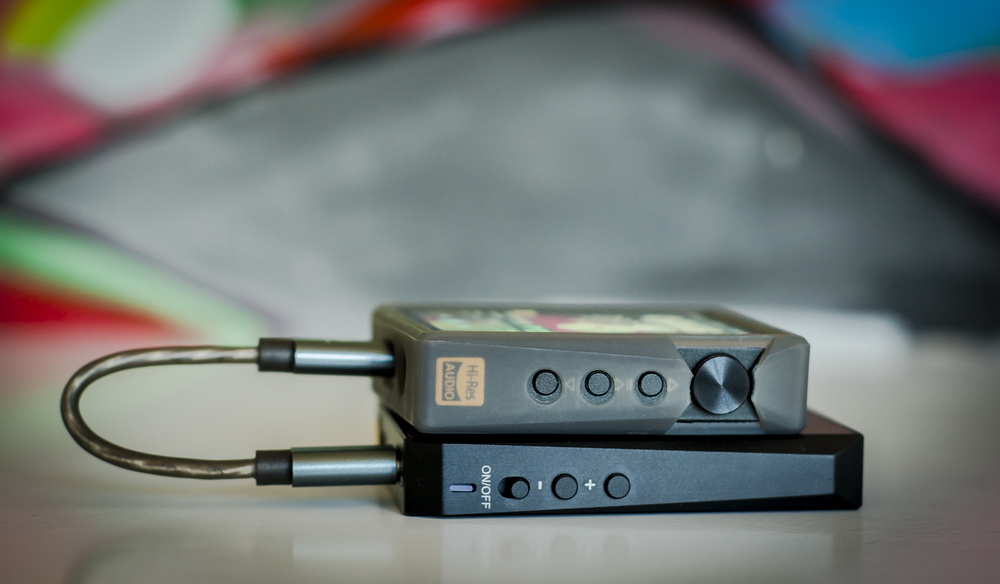
In standalone operations, DH80S is nicely looking and monolithic in hands, comfortable to hold and operate. Although, we should mention that buttons do rattle a little and LEDs were not aligned well with body openings in our particular pre-mass production sample. We have not spotted similar issue on the pictures of samples that were released later.
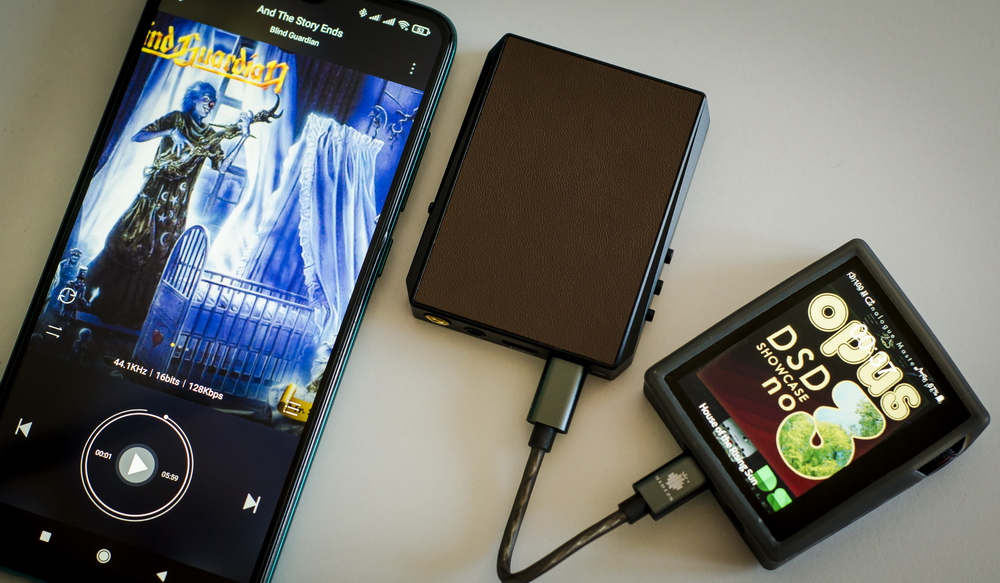
Device in use:
One of the first questions that comes in mind – why there are two separate type-C USB ports? One is designed solely for charging and another one accepts data. With such design, battery charging is done only through charge port. What advantages does it bring to us? It means that the source battery would not be drained to charge DH80S. On the other hand, if DH80S runs out of charge in the middle of nowhere, our source device would not be able to power it up… We would need a powerbank or other power source to bring DH80S back to life. One question which is not quite clear is the logics of power LED. It lights up shorty when power switch is on and stays lit green during charging process. Not really what we’ve got used to.
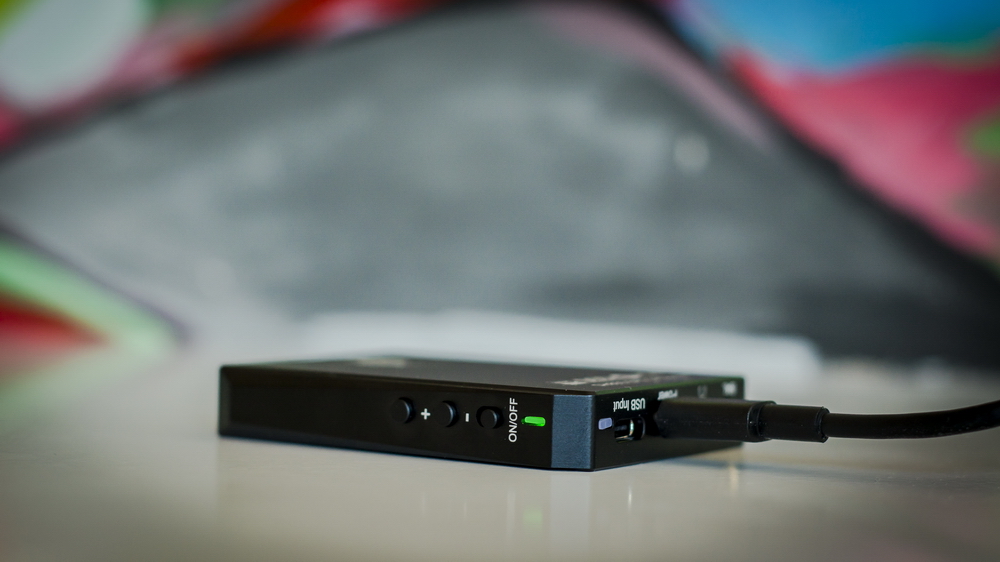
Charging from empty to full takes around 2.5 hours and battery lasts for about 8 hours of use through SE audio output at ~70% volume. DH80S never got hot during charging or regular operations.
This DAC/amp can be used either with Android or iOS smartphones or with desktop OS like Windows 10 and Mac. All of those would natively support DH80S, with no need for extra drivers. Although, for the best audio quality under Windows environment it is better to wait until Hidizs would release a dedicated ASIO driver which is not yet available. With Android OS – we have used HiBy Music app to feed bit-perfect stream over USB. No issues. For those who have Tidal or Qobuz subscriptions – DH80 series support an impressive 8X MQA unfold over USB.
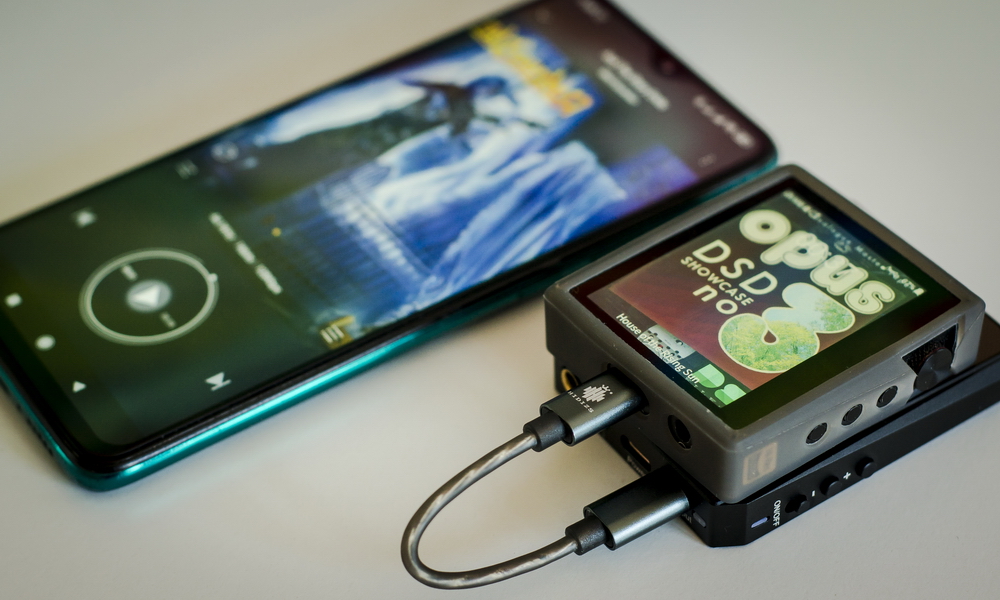
All control buttons, apart of volume, are represented by multi-position switches (sliders) for the sake of easy blind operations and faulty triggering protection. Volume buttons are regular press-to-operate with tangible click and reasonable force to be applied. Unfortunately, those operate in discrete steps, far less precise than any analog potentiometer. GAIN switch has uncommon three (!) positions (LOW, MID, HIGH) with significant change in resulting amplification. Additional care should be taken when tuning GAIN to your liking with sensitive low impedance IEMs as those might just burn with MID, HIGH settings at higher volume. The amount of power output is not too impressive, but still unexpectedly high from such tiny device – 210mW at BL / 32Ohms and 125mW at SE / 32Ohms. It results in ~0.5W with 10-15Ohms impedance IEMs on balanced output which is a significant figure for the most of hybrid or armature IEMs. Thus, DH80 makes sense even in stack with AP80Pro – it would add significantly more power, 4.4mm BL output and MQA support.
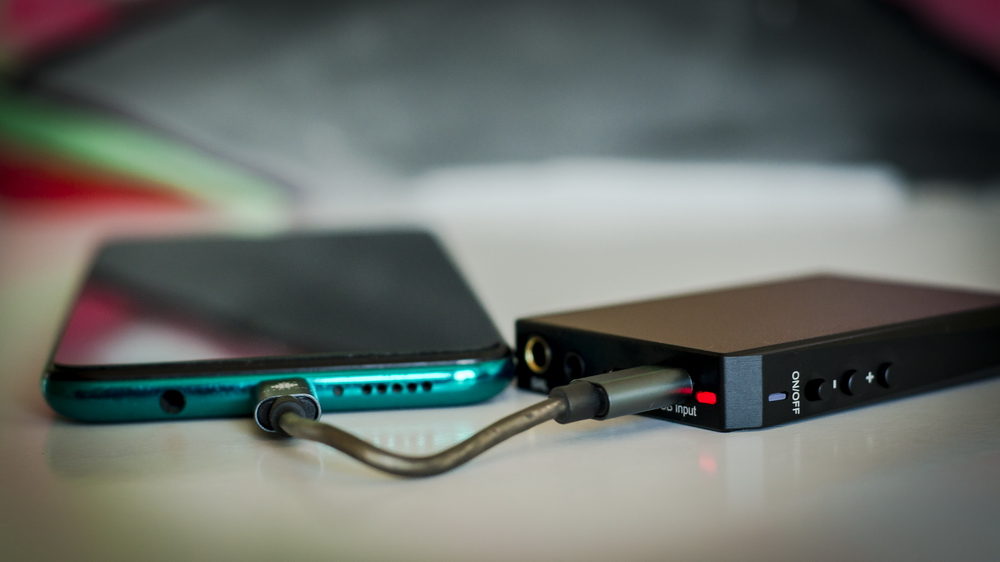
General operations did not cause any troubles, no issues and faults were found during couple of week of heavy testing. There were couple of random reboots in forced unlikely operation, for example – trying to quickly switch between DSD/FLAC tracks not even waiting for the track to begin to play… But this was a part of experiment that was also submitted to Hidizs for additional checks. Regular usage is straight forward, fluent and not causing any issues. BTW, sampling rate LED does its work and is synchronized to track quality, even indicates MQA with pink color. Therefore, we can conclude that DH80S has the consistency and provides good user experience.
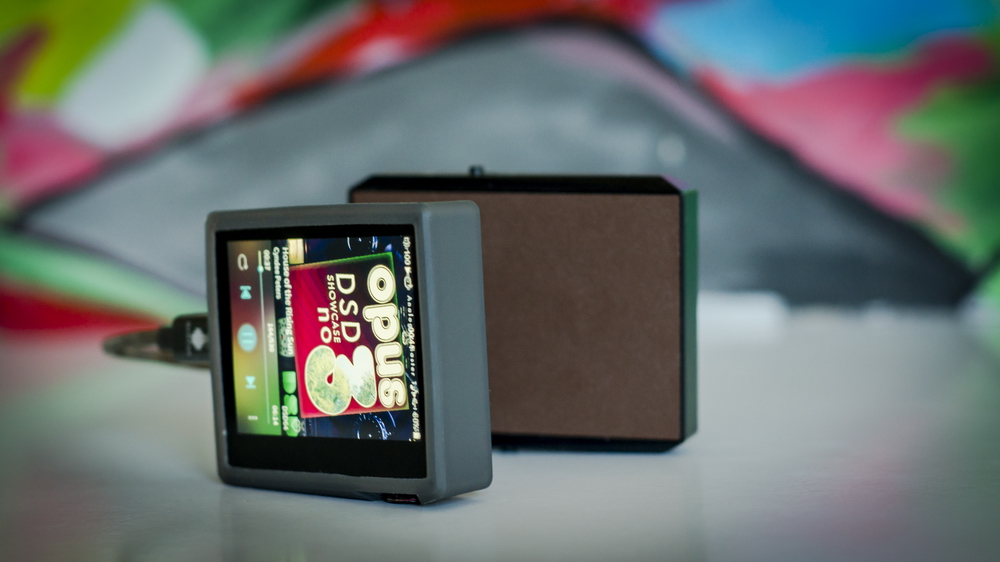
Sound quality:
Test gear: Hidizs AP80 DAP + Hidizs DH80S DAC/AMP + various IEMs + AudioTechnica ATH-M50
Lows and midbass:
Hidizs DH80S resolves lows with above average amount of textures, capable of delivering it with nice outlines in perfect balance with other ranges. Extension is on the pros side, bass is neither too fast or slow. Lows show adequate volumetric feel and do not interfere with mids and treble. Bass portion is fully perceptible, making the stage wider and the complete picture warmer to a reasonable extent. Although, we can not tell that this DAC|amp is warm or dark, let’s say neutral or even a little bit dry. But lows and mid bass do a great job on making it less analytical. Mid bass is decent – sounds natural and powerful. Dynamics and articulation on drums are both impressive.
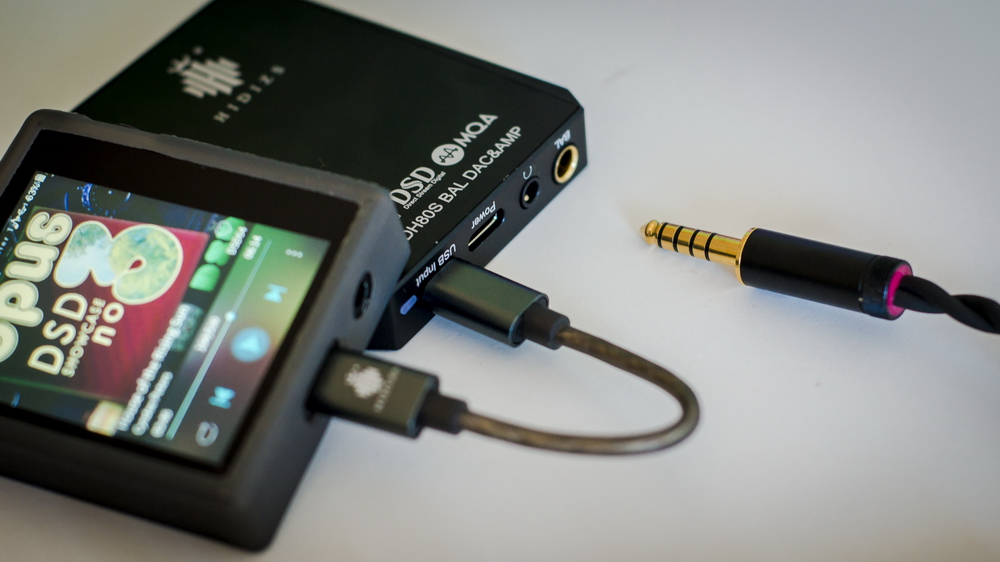
Mids and vocals:
More resolution is observed in this range while the entire picture stays similarly neutral. Vocals are not popping out or recessed, show slight tendency towards emotional side but not sounding too thin. They do take a central part on the stage and close to monitor reproduction. No harsh and screaming notes. With slight emotional appeal male vocals still maintain good touch of warmth. Instruments of upper range show the most amount of tiny details. Excellent instrument separation positively results into stage depth. In overall, mids feel natural, energetic and emotional.
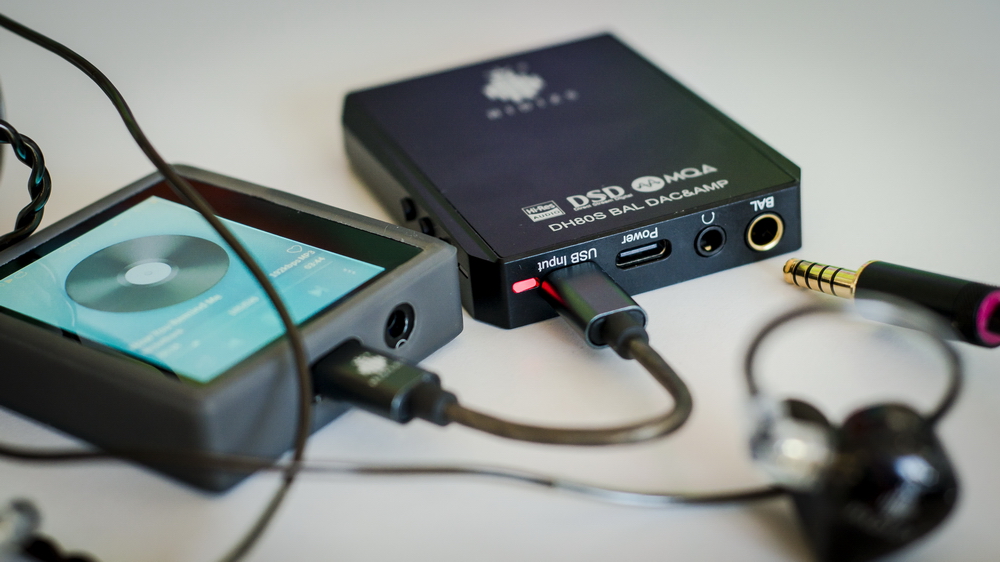
Treble:
Treble is perceived balanced to the rest of the ranges with no extra emphasis or excessive capabilities. It has enough clarity and crispness and the extension and micro dynamics are good. Treble is accurate in general and naturally compensates good bass presence without any piercing or dirty effects. The potential of this range might only be compromised with very expensive BA or piezo drivers while for the most of IEMs and overheads DH80 treble has the excessive potential.
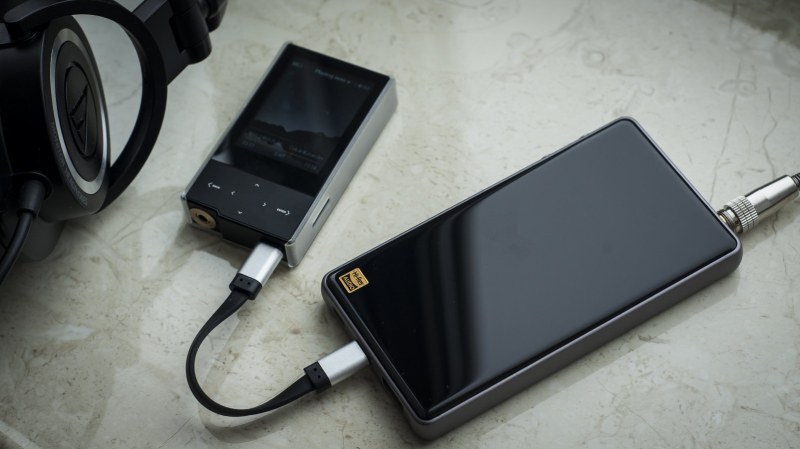
Compared to Hidizs DH1000:
DH1000 is very similar in its purpose and nature. It has a better battery life, more comfortable volume control and more appealing look. Moreover, it sounds more delicate, accurate and less dry. But it is more expensive, has not-that-convenient 2.5mm BL output, less power… We would say that DH1000 would be better for desktop use while DH80S is a better companion for any smartphone on-the-go.
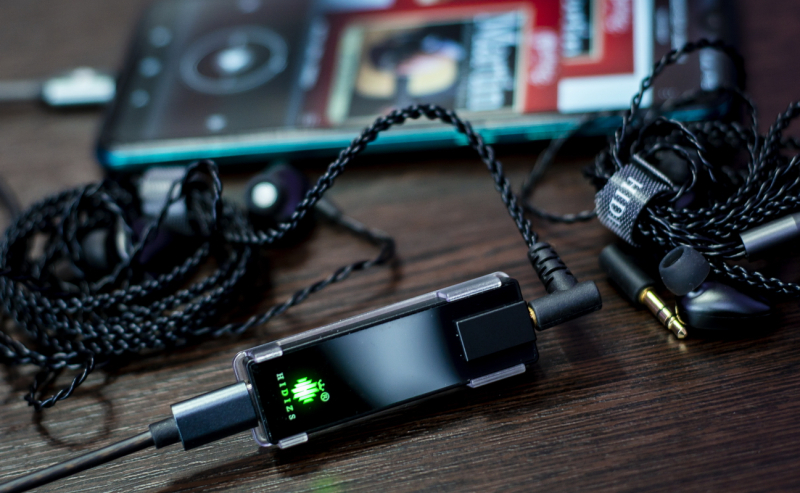
Compared to Hidizs S9:
S9 is very interesting external power dependent small DAC/amp with BL and SE outputs. Since it is so tiny – it is limited in driving potential and power compared to DH80S. It also does not feature MQA and processes sound with less amount of details, creating less separation and smaller stage. Apart from that, S9 is great ultra-portable DAC|amp that might be chosen over DH80S if charging another battery is boring and carrying another relatively large device in a pocket is cumbersome.
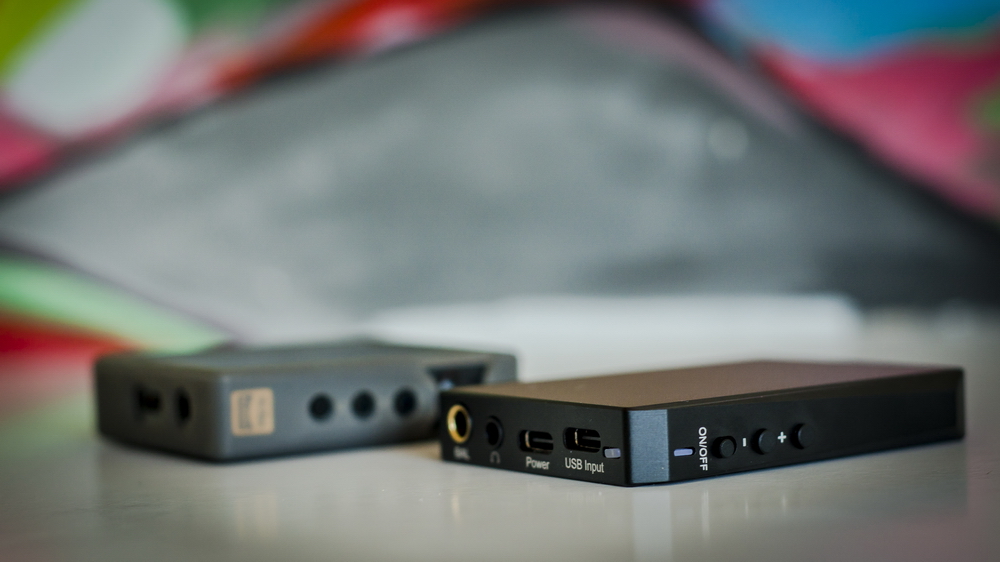
Conclusion:
Our conclusion is that Hidizs DH80S really sounds neutral, it even has a tendency to monitor-like, dry performance. It would be a good starting point for anyone who searches for transparent performance with analytical approach which would nicely pair with most of the end gear, not coloring the resulting sound. Tonality is neutral, no extra emphasis or accents, good amount of textures and details, high power and driving potential on balanced output, plus 8X MQA support – attractive combination of great features within low budget. We have already made it a part of our travel setup as it is the smallest and the most powerful DAC/amp. Two weeks – so far, so good. Wishing you the same… 🙂
You can get DH80/DH80S in Hidizs official website: LINK
10% discount for any item at Hidizs store using our promocode: ZMCR10

